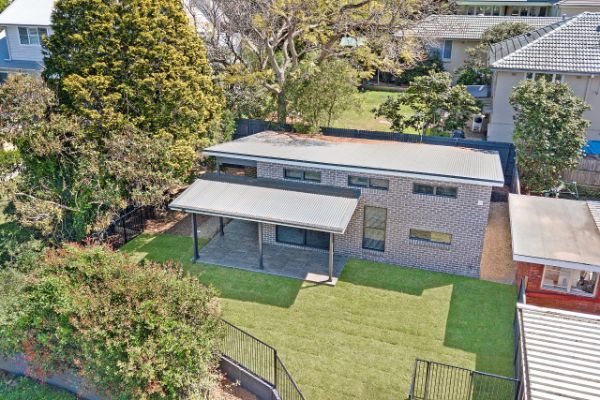



Get in touch
with us today…
Contact us for a private viewing to see a granny flat in your area today!

Employment Opportunities
We are always open to hiring motivated and creative workers who share our same passion to provide high-quality dwellings and attentive customer service.
If you are interested, please submit your details and resume.
The Central Coast Granny Flat Rules You Need to Know Before Building

Are you preparing to build a granny flat on your Central Coast property?
If so, there are several rules and things you should know before kick-starting the process.
In this article, we’ll explain everything you need to know before you become a granny flat owner on the Central Coast. If the rules and regulations sound overwhelming, don’t fear. All you need is a team of granny flat building experts like us, who do all the work for you and make starting a granny flat project a breeze.
Central Coast Granny Flat Rules and Regulations: Procedures for Applying for a Granny Flat
The Affordable Rental Housing State Environmental Planning Policy
If you meet certain criteria published by NSW legislation, you can actually start to build your granny flat without council approval. The Affordable Rental Housing State Environmental Planning Policy was created in 2009 to help promote affordable accommodation in NSW. All of the criteria can be found here and include:
- Your property must be larger than 450m2
- The granny flat can only have a maximum living space of 60m2
- The granny flat must be built in the backyard of the pre-existing dwelling
If you meet these criteria, there will likely be minimal red tape involved before you can get started and move on to getting a Complying Development Certificate before building.
A Complying Development Certificate
The next step (after checking the criteria to see if you may qualify for the Affordable Rental Housing State Environmental Planning Policy) is to apply for a Complying Development Certificate (CDC).
This CDC process is the alternative approval process provided by the NSW Government, which was otherwise time-consuming, usually involving awaiting drawn-out council approvals. The CDC process fast-tracks the proposed development covering land use and construction works. To be eligible for this certificate, your block needs to comply with the criteria and the appropriate SEPP (State Environment Planning Policies).
Once you’ve been approved, you’ll need to submit the certificate application to a nominated accredited certifier or Central Coast council officer. You’ll receive a review or approval within 12 to 28 days. Once you have received this, you can start construction work.
Not sure where to start? Don’t worry – at Granny Flat Solutions, we take care of this for all of our clients to make sure the building process is as simple as possible.
Development Applications
If your land is in a residential zone but does not meet the development standards in the affordable rental housing SEPP, you may still be eligible to be approved for a secondary dwelling in the Central Coast area. Instead of a CDC, however, you’ll need to complete a Development Application (DA).
To start, ensure that you have some idea of where you intend to build, your land’s suitability, and your design. Once you have appropriate planning details organised, you can move forward with your DA.
It’s important to note that the DA process is longer and more costly than acquiring a CDC, and you aren’t guaranteed to get approval. At Granny Flat Solutions, however, we have been successful in submitting many DAs over our 40 years of building granny flats on the Central Coast.
Be mindful that you will have to pay a Central Coast council development levy from Section 94 of the Environmental Planning and Assessment Act 1979. How much your levy is depends upon a range of factors. Influences on the levy include your address, block size and building height.
How to get a Complying Development Certificate or complete a Development Application
The easiest way to deal with these approval processes is to work with an experienced granny flat builder who can navigate the process for you.
Builders like us at Granny Flat Solutions submit Development Applications and organise Complying Development Certificates all the time. We know all the criteria and how to make sure your granny flat meets all the rules and regulations required before building.
Contact us to learn more about ensuring your Central Coast granny flat meets the region’s rules and regulations.
Key Differences to consider building a Central Coast Granny Flat vs a Sydney Granny Flat
The Central Coast is so close to the Sydney city suburbs, but the building process can often differ.
The semi-rural area of the Central Coast is a region that boasts natural beauty and wildlife. Due to its natural differences from its sister city of Sydney, here are some details homeowners may need to consider before building a second dwelling on their property on the Central Coast:
- Uneven surfaces – Many buildings from the Hunter Valley to Newcastle region are located on sloping ground, creating complex needs and modifications throughout the building process. This requires extra attention, cost and time, which can often be a setback (if not done with an expert granny flat building team). Ensure that you, or your builder, have checked out the relevant zoning and regulations before considering whether a granny flat may or may not be suited to your property.
- Accessibility – The Central Coast is full of trees and steep terrain, occasionally creating challenges for accessibility. Ensure you thoroughly consider where you can find clear access for building and any challenges that may come with your property’s terrain.
- Design – one of the many benefits of building a granny flat is the wide variety of design options. Our services can help you create a customised living space, an additional backyard or even an additional floor area to further enhance the experience of your home.
Get started building your Central Coast Granny Flat
If you’re considering building a granny flat on the Central Coast, contact us today. Our experienced, award-winning team can help you with every step, from design to approvals, to building and completion.
We have a long history, strong knowledge and understanding of building on the Central Coast. Contact us today for a free quote.
Ready to start your building journey? Chat to our team of experts today and get a FREE personalised quote
Find Out More
“Experience the difference for yourself.”
Call 02 9481 7443 or contact us online now to book your free site inspection and quote.







